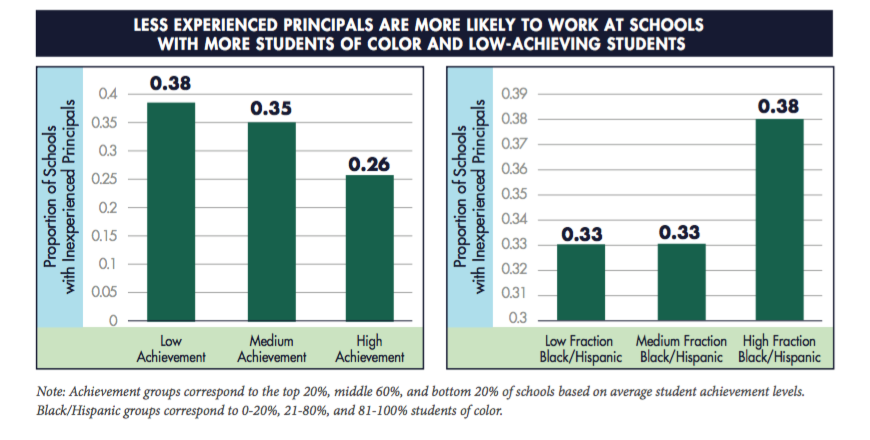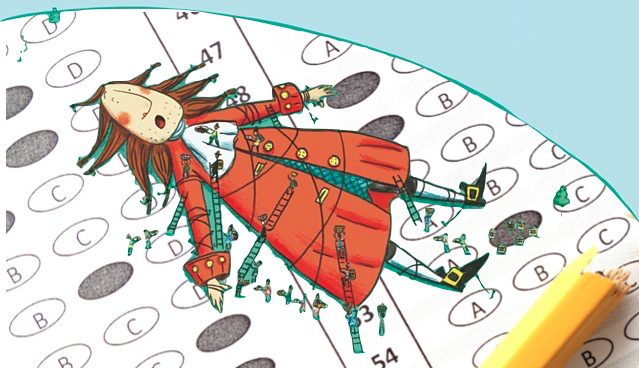
President-elect Joe Biden.
Go ahead and say that aloud once.
“President-elect Joe Biden.”
How does it feel?
If you’re like me, it feels pretty good.
And to be honest I never expected that it would.
Sure, I voted for Joe. I gave money to the campaign. I volunteered.
But Biden was far from my first choice. In fact, looking over the field of Democrats seeking the party’s nomination, he might have been my last pick.
I was a Bernie Sanders guy and probably will be until the day I die.
But damn if it doesn’t feel good to say “President-elect Joe Biden!”
Before today, I would have said the best thing about Joe was that he isn’t Trump. And, frankly, I think that is mainly the fact that won him the election.
It was a repudiation of Trump more than a celebration of Biden.
However, now that the dust has cleared and all the states but Georgia, Alaska and North Carolina have been called, I’m starting to have some thoughts about what a Biden administration might actually look like.
And it might not be too bad.
So here are what I see as the five main hurdles coming up for the Biden administration and why we might be cautiously optimistic about their outcomes:
1) Trump Will Fail to Successfully Challenge the Election Results
As of this writing, Biden has 290 electoral votes to Trump’s 214.
Alaska will probably go to Trump and North Carolina is a bit of a toss up. Georgia will almost certainly go to Biden.
It actually doesn’t really matter.
The world and the media have already accepted the results.
Biden has been elected the 46th President of the United States.
In the absence of solid evidence of massive voter fraud in multiple states – many of which are controlled by Republican governments – it is unlikely that these results can be successfully changed.
Many Republican leaders like Pat Toomey, Rick Santorum and Mitt Romney have already accepted this fact. Far right leaders of other countries like Boris Johnson and Benjamin Netanyahu have already congratulated Biden.
It’s over.
And if there were any doubt about it, the Trump administration accidentally booking a press conference at Four Seasons Total Landscaping in Philadelphia instead of the Four Seasons hotel – and then pretending that’s what they intended all along – should put the final nail in the coffin.
You don’t know Four Seasons Total Landscaping? It’s a landscape gardeners located between a crematorium and a dildo shop.
That is not the work of people capable of running an effective challenge to a national election.
Yes, there are enough far right justices on the Supreme Court to pull off this Coup d’état. But I don’t think even they would have the guts to do it in light of the world’s acceptance of Biden, the acceptance of many in the GOP and the blatant incompetence of the Trump administration.
I admit that I could be wrong. And I certainly don’t think we should underestimate these neofacists.
Trump is a cornered rat, and that is when rats are at their most dangerous.
However, I think there is good reason to think he will not be able to steal this election no matter how many tantrums he throws on the floor of the Oval Office or Mar-a-Lago.
2) Control of the Senate Rests on Georgia
It appears that the election will not, by itself, change the balance of power in Congress.
The Democrats have lost seats in the House but not enough to lose a majority. They do not appear to have picked up enough seats in the Senate to rest control away from the GOP.
However, on January 5th there will be runoff elections for both U.S. Senate seats in Georgia.
Yes, you read that right – Georgia!
If Democrats Raphael Warnock and Jon Osoff both win, Joe Biden will have a congressional majority to actually get his policies passed.
No more Mitch McConnell as Senate Majority Leader.
No more obstruction.
It would be HUGE.
And it is incredibly positive that this is taking place in Georgia where Stacey Abrams has done an amazing job organizing grassroots efforts to turn the state blue.
We have a real chance here.
No doubt Republicans will try to throw whatever they have left to stopping the Dems in these races. But how much do they really have after being beaten nationwide?
Will momentum and an existent grassroots network be enough to flip the script for Dems?
Chances are good. It all depends on what we do in the next few months.
3) Progressives Will Not Let Neoliberals Ignore Them
A huge hurdle for the Biden Administration and the Democratic Party will be how we try to move forward together.
Biden won a huge national majority of votes – 75 million – the most any candidate ever has received.
However, a similar record was true of Hillary Clinton in 2016 and she still lost because of the electoral college.
Thankfully things are not playing out that way in 2020. But they could have very easily.
Frankly, the fact that Biden didn’t beat Trump by an even greater margin is extremely troubling.
Almost half of the voting public – 71 million – support this racist, neofacist, incompetent fool. And only a slight majority oppose him.
I believe firmly that this is because of the Democrats’ strategy in this campaign.
Both this year and in 2016, there was very little positive policy being offered – very little popular positive policy positions that would have directly impacted the majority of Americans.
Many folks voted for Trump out of despair. They wanted a change – any change – burn it all down if necessary.
Had Medicare For All or the Green New Deal been on the ballot, things might have gone differently – or more emphatically – our way.
But, instead, it was all about getting rid of Trump.
Thankfully, that was enough. But had the party actually offered voters something more – things that are overwhelmingly popular with everyday people but unpopular with party elites and their wealthy backers – the results could have been a landslide in Biden’s favor.
Representative Alexandria Ocasio-Cortez spoke for many progressives in a New York Times interview.
She said that every candidate that co-sponsored Medicare for All in a swing district was reelected. Even Mike Levin, who many thought had committed political suicide by co-sponsoring the Green New Deal, kept his seat.
Supporting progressive policies did not sink anyone’s campaigns. In fact, that’s how insurgent Democrats have been unseating centrists across the nation.
“I’ve been unseating Democrats for two years,” Ocasio-Cortez said. “I have been defeating D.C.C.C.-run campaigns for two years. That’s how I got to Congress. That’s how we elected Ayanna Pressley. That’s how Jamaal Bowman won. That’s how Cori Bush won. And so we know about extreme vulnerabilities in how Democrats run campaigns.”
This is a fight for the heart and soul of the Democratic party.
We cannot continue to move to the right and expect the base – which are much further left – to continue to vote for increasingly conservative candidates.
There is already a party for that – it’s the Republicans.
“I need my colleagues to understand that we are not the enemy,” she said. “And that their base is not the enemy. That the Movement for Black Lives is not the enemy, that Medicare For All is not the enemy. This isn’t even just about winning an argument. It’s that if they keep going after the wrong thing, I mean, they’re just setting up their own obsolescence.”
We will see if the Biden administration learns these lessons or not.
I think there is good reason to be cautiously optimistic here. It is in the party’s own self interest.
But only the future will tell.
4) Biden will Take Steps to Control the Coronavirus
Unlike his predecessor, Biden has been a consistent voice of sanity on the COVID-19 pandemic.
Yesterday, he tweeted:

“We cannot repair the economy, restore our vitality, or relish life’s most precious moments — hugging a grandchild, birthdays, weddings, graduations, all the moments that matter most to us — until we get this virus under control.”
And true to his word, this appears to be the first thing on his agenda.
Tomorrow he is expected to name a group of leading scientists and experts as transition advisers so his administration can get started combating the virus on inauguration day, Jan. 20, 2021.
The Coronavirus Task Force is expected to be led by former Surgeon General Dr. Vivek Murthy and Dr. David Kessler, who led the Food and Drug Administration during the 1990s.
Specifically, Biden’s plan calls for empowering scientists at the Centers for Disease Control and Prevention (CDC) to help set national guidance based on evidence to stop outbreaks, work on a vaccine, testing, contact tracing and other services.
His administration would use the CDC to provide specific guidance — based on the degree of viral spread in a community — for how to open schools and businesses, when to impose restrictions on gathering sizes or when stay-at-home orders may be necessary.
He would create a national “pandemic dashboard” to share this information with the public.
He would work with every governor to make mask-wearing in public mandatory in their state – a measure that, alone, could save more than 100,000 lives.
He would make sure that everyone has access to regular, reliable, free testing.
He would hire 100,000 additional public health workers to coordinate with local organizations around the country to perform contact tracing and other health services. These people would help with everything from food insecurity and affordable housing to training school officials about when and how to make it safe to reopen buildings.
He proposes the federal government cover 100% of the cost of Consolidated Omnibus Budget Reconciliation Act (COBRA) coverage for the duration of the crisis for people who get sick from the virus. If someone loses employer-based health insurance, they would still have health insurance through this plan.
He also will push to strengthen the Affordable Care Act, expanding coverage by making more people eligible.
He’d use the Defense Production Act to increase production of masks, face shields and other personal protective equipment so that supply exceeds demand.
I don’t know about you, but to me this seems a breath of fresh air. It is what the federal government should do and what it hasn’t been doing under Trump.
And I see no reason why the Biden administration can’t get it done.
5) Biden Can’t Afford to Re-up Betsy DeVos’ Education Policies
When it comes to public education, neither party has really been an ally to teachers and students.
Betsy DeVos was worse than President Obama’s Education Secretaries – Arne Duncan and John King. But let’s not fool ourselves that these Democratic functionaries were any good, either.
They all supported charter schools, high stakes testing, increased segregation, the school-to-prison pipeline, evaluating teachers on student test scores, targeted disinvestment to schools in poor neighborhoods serving mostly students of color, and more.
Duncan and King were competent at destroying public education while hiding behind neoliberal rhetoric. DeVos was incompetent in every conceivable way and could barely hide her glee at the prospect of destroying public education.
Since Biden’s wife, Jill, was an actual teacher, he has more to lose than previous chief executives if he gets this wrong. He can’t take schools for granted and he can’t appear to be doubling down on the same policies of Trump and DeVos – which to be honest were mostly the same as those of Obama and Bush but on steroids.
Biden promised a public school teacher would be his next education secretary and Politico is already making predictions. The media outlet suggests ex-National Education Association (NEA) President Lily Eskelsen Garcia, American Federation of Teachers (AFT) President Randi Weingarten or Stanford Education Professor Linda Darling-Hammond.
Frankly, we could do much worse than any of these people. Hammond, in particular, was Obama’s education policy advisor UNTIL he was elected and changed courses to the neoliberal set.
Of all the hurdles coming his way, I have the least hope Biden will overcome this one.
But who knows? The stakes are high. Jill has his ear.
We can make our voices heard, cross our fingers and hope for the best.
At a time when teachers are struggling just to have a safe environment in which to work, actual education policy is almost a distant luxury.
For the meantime, I’ll give Joe a chance and remain cautiously optimistic.
The ball is in Biden’s hands. He deserves the right to make a shot.
And if he misses, at least we can celebrate the end of the Muslim ban, reinstating the DREAM Act, rejoining the Paris Climate Accords, rejoining the World Health Organization and the restoration of a functioning federal government to the USA.
Like this post? You might want to consider becoming a Patreon subscriber. This helps me continue to keep the blog going and get on with this difficult and challenging work.
Plus you get subscriber only extras!
Just CLICK HERE.

I’ve also written a book, “Gadfly on the Wall: A Public School Teacher Speaks Out on Racism and Reform,” now available from Garn Press. Ten percent of the proceeds go to the Badass Teachers Association. Check it out!




























